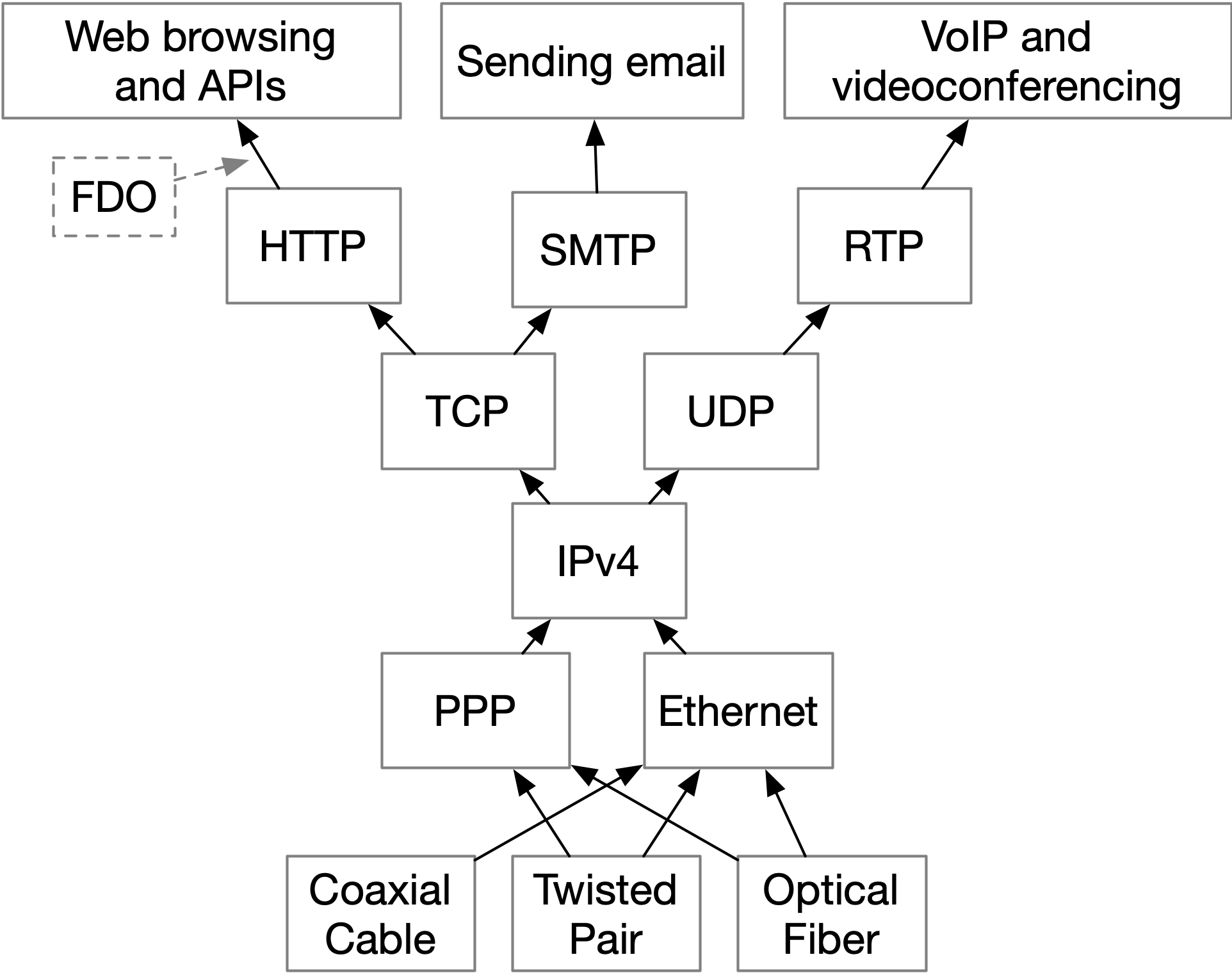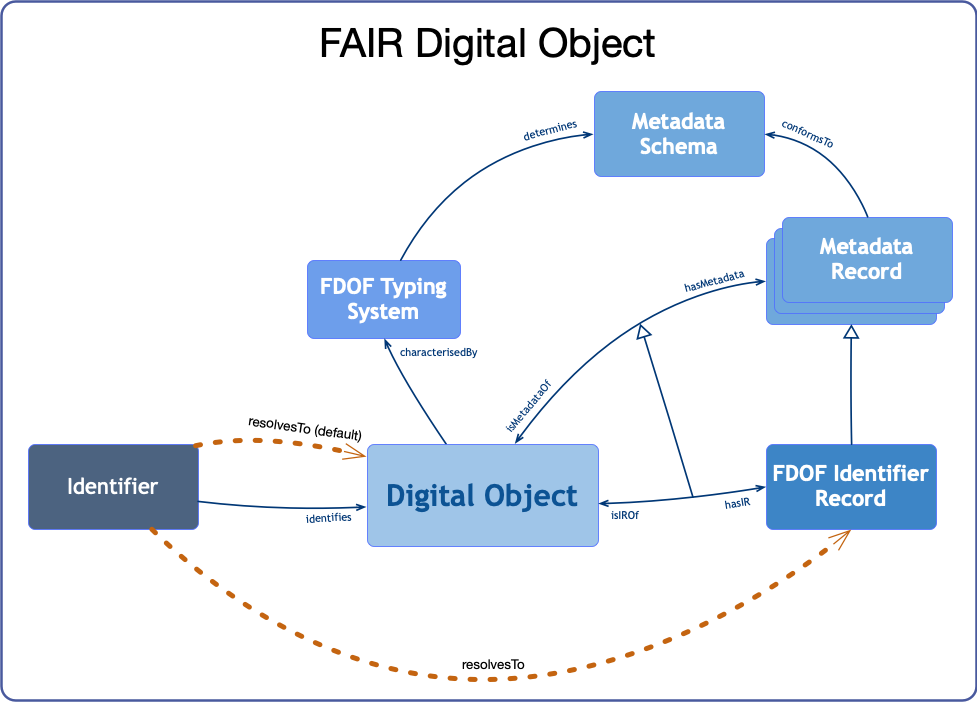A FAIR Digital Object - Inching up the Hourglass
Whether deliberate1 or inevitable2, the hourglass architecture of the Internet supports a great diversity of applications implemented using a great diversity of supporting services:

Could there be a minimal “spanning layer” protocol for FAIR-principled3 applications and services? The FAIR Digital Object (FDO) has emerged as a conceptual nexus for consideration of such a protocol.
There is a working draft online for an FDO framework.4 In it, an identifier resolves to a digital object (byte sequence) by default, but one may also request a so-called identifier record. This record would certainly support – via a simple qualified reference – the operation of accessing the identified object’s value-obvious situational information, i.e. the raw byte sequence. Crucially, the identifier record would also support – again, via simple qualified references – operations to access methodological (still value-obvious to certain consumers) and more philosophical (epistemic, ontological, axiological – value typically not obvious) information:

References
M. Beck, “On the hourglass model,” Commun. ACM, vol. 62, no. 7, pp. 48–57, Jun. 2019, doi: 10/gj3fnj. ↩︎
S. Akhshabi and C. Dovrolis, “The evolution of layered protocol stacks leads to an hourglass-shaped architecture,” SIGCOMM Comput. Commun. Rev., vol. 41, no. 4, pp. 206–217, Oct. 2011, doi: 10.1145/2043164.2018460. ↩︎
M. D. Wilkinson et al., “The FAIR Guiding Principles for scientific data management and stewardship,” Sci Data, vol. 3, no. 1, p. 160018, Mar. 2016, doi: 10/bdd4. ↩︎
L. O. Bonino da Silva Santos, “FAIR Digital Object Framework Documentation,” Nov. 03, 2021. https://fairdigitalobjectframework.org/ (accessed Jul. 19, 2022). ↩︎